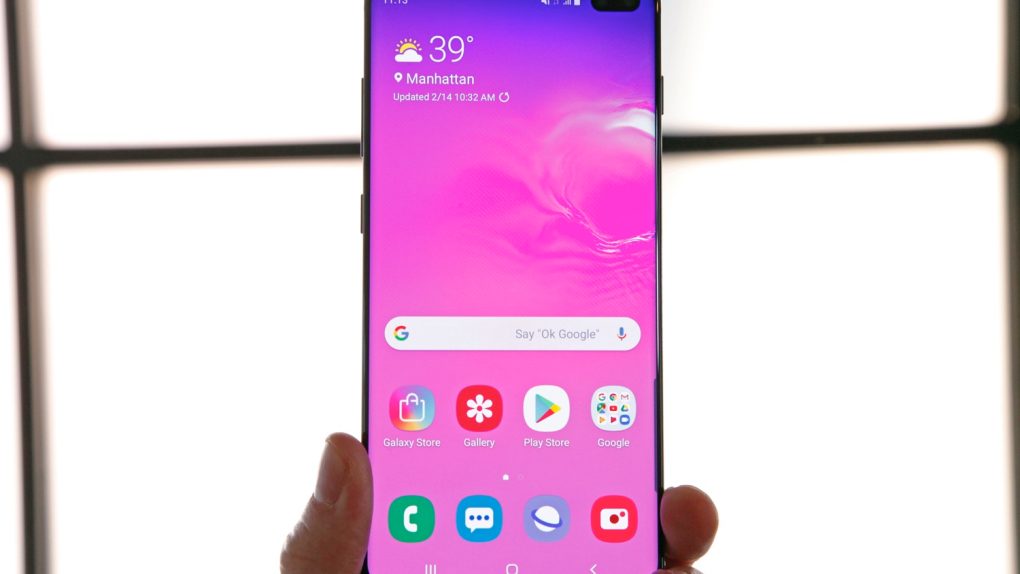When it comes to smartphone design, 2019 is already shaping up to be one of the most exciting years ever. Apple’s iPhone 11 series smartphones are going to reuse the same design we saw on the iPhone XS last year and the iPhone X in 2017, but Apple is the only major smartphone company that’s going to sit still this year as far as display design is concerned. Samsung already released its new Galaxy S10 series smartphones, which ditch the thick bezels above and below the screen and introduce a nifty new “hole-punch” design where the front-facing cameras actually sit in a tiny hole in the top corner of the display. Then next week, OnePlus is expected to be the first company to bring the “pop-up camera” design to the United States in the new OnePlus 7 Pro. With this solution, the screen extends as far as it can to each edge and there are no notches or holes at all. Instead, a small motorized mechanism that houses a selfie camera pops up out of the top of the phone anytime a front-facing camera is needed. When it’s not in use, it retracts back into the handset.
That’s just the tip of the iceberg. Companies are working on all sorts of solutions that will allow them to stretch the screens on their flagship smartphones so that they cover the entire face of each device. One Chinese smartphone maker even added a small second screen to the back of a smartphone so that the rear camera can double as a selfie camera. It’s an interesting solution (that we’re surprisingly obsessed with because of the way it was implemented), but it’s just a stopgap. In fact, all of the new smartphone designs we’re seeing right now are merely stopgaps solutions. The holy grail of all-screen phone tech has been in the making for years now, and it’s going to completely change the game. What’s more, it’s finally close enough to becoming a reality that Samsung was willing to confirm it publicly.
Front-facing cameras and other sensors have long been the biggest barrier standing between phone makers and the true all-screen smartphones they’re dying to give us. Things like speakers and ambient light sensors can be made small enough to fit in even the narrowest of bezels. In fact, there’s tech out there now that lets companies use the actual display on a phone as a speaker, so the phone doesn’t even need a dedicated ear speaker at all. But cameras need light to capture images and video, and lenses need space so they’re big enough to let enough light through.
Placing the camera lenses under the screen itself is the best answer when designing phones with frameless displays. But the problem with this solution is that right now, that means cutting a hole through the screen so that the camera view isn’t obstructed. Believe it or not, however, that won’t always be the case.
Check out this video, which was filmed by Panasonic back in late 2016. We’ve set it to start playing at the 0:57 mark so you can skip right to the relevant part.
Pretty incredible, right? There are actually already commercially available displays that are transparent, but the tech involved with making them is still quite costly. It’s also not ready to scale to devices that are small and that need to be mass-produced by the millions like a Galaxy phone or an iPhone. It’s not ready yet, that is.
Korean language industry news site MyDrivers reported late last week that Samsung has developed mobile displays with camera embedded underneath them. We’re not talking about a setup like the Galaxy S10 though, were a hole is cut out of the screen. This is a 100% “perfect full-screen” design where the cameras sit behind an active area of the screen. The exciting news was confirmed by a vice president of Samsung’s display R&D group named Yang Byung-duk.
Now, does this mean that we can expect true all-screen Galaxy phones to be released later this year or even next year? No. Does it mean Samsung’s top mobile display customer Apple might be getting ready to release a true all-screen iPhone where the cameras and TrueDepth sensors sit behind the phone’s screen? Unfortunately not. But it does mean that this tech is working behind closed doors, and it should indeed see the light of day at some point soon.







